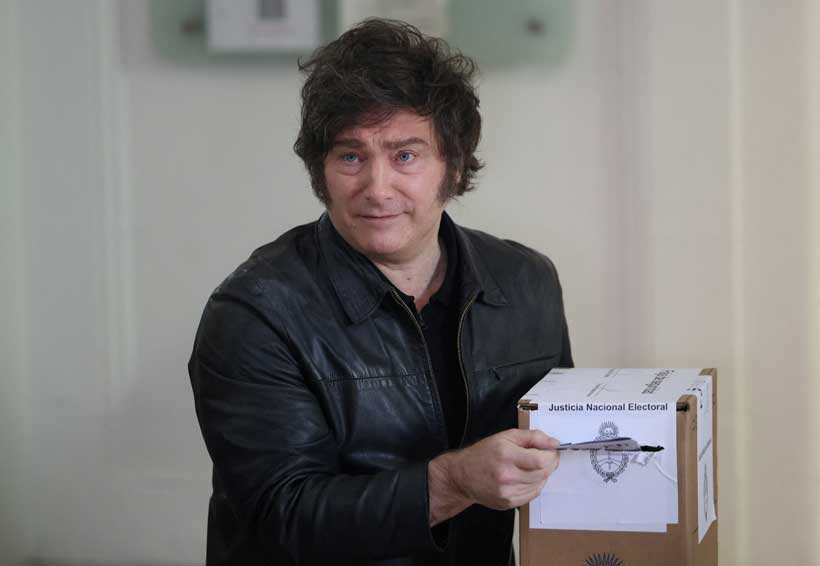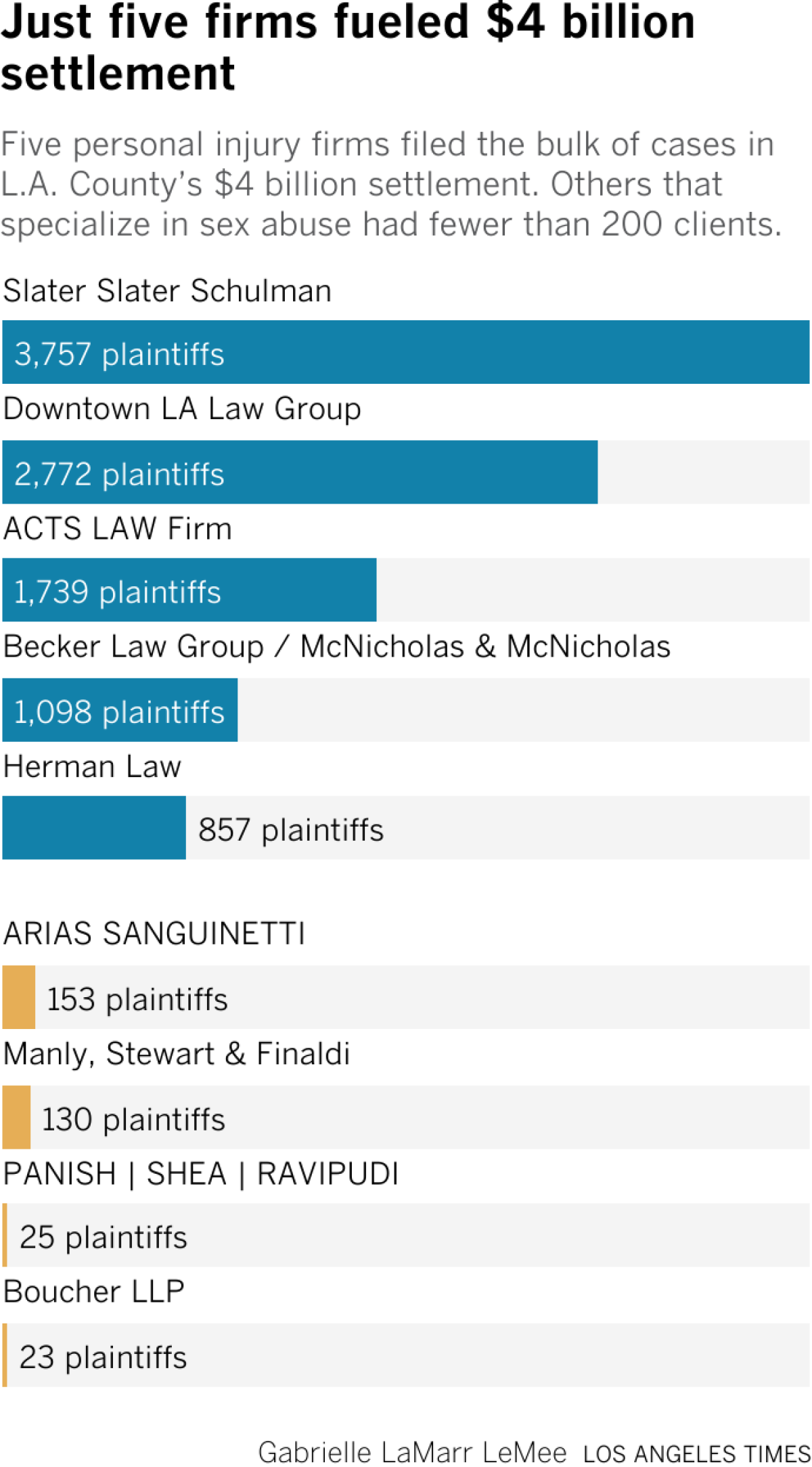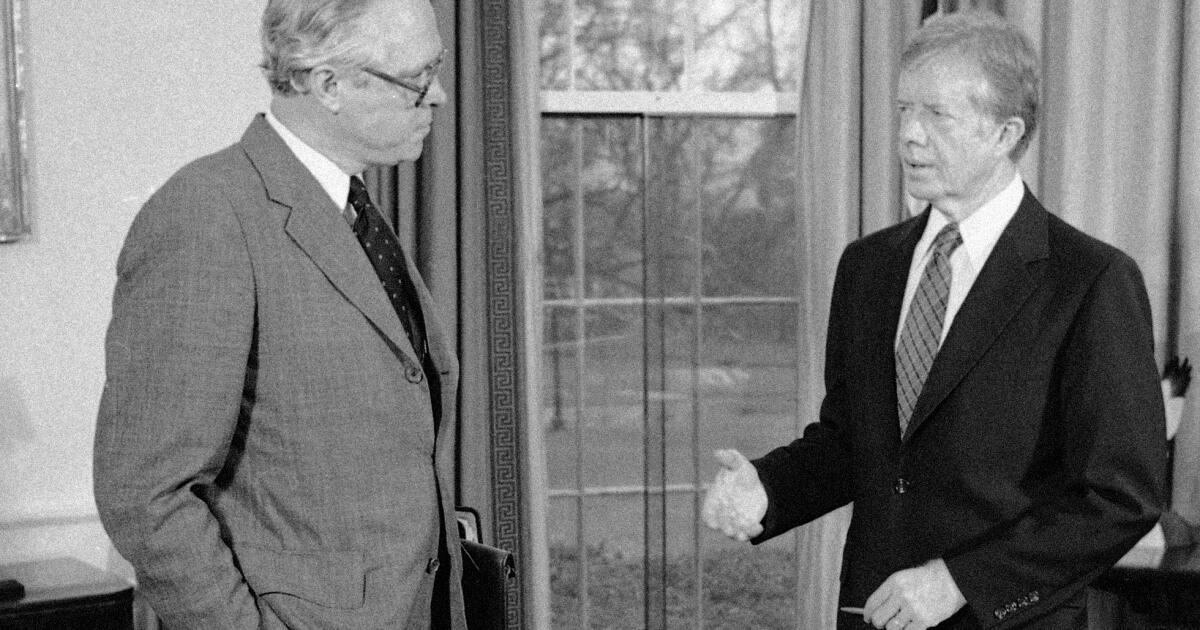U.S., China reach tentative trade deal at Asia summit
Top trade negotiators for the U.S. and China said they came to terms on a range of contentious points, setting the table for Presidents Trump and Xi Jinping to finalize a deal and ease trade tensions that have rattled global markets.
After two days of talks in Malaysia wrapped up Sunday, a Chinese official said the two sides reached a preliminary consensus on topics including export controls, fentanyl and shipping levies.
U.S. Treasury Secretary Scott Bessent, speaking later in an interview with CBS News, said Trump’s threat of 100% tariffs on Chinese goods “is effectively off the table” and he expected Beijing to make “substantial” soybean purchases as well as offer a deferral on sweeping rare-earth controls. The U.S. wouldn’t change its export controls directed at China, he added.
“So I would expect that the threat of the 100% has gone away, as has the threat of the immediate imposition of the Chinese initiating a worldwide export control regime,” Bessent said. He separately told ABC News he believed China would delay its rare-earth restrictions “for a year while they reexamine it.”
Bessent telegraphed a wide-ranging agreement between Trump and Xi that would extend a tariff truce, resolve differences over the sale of TikTok and keep up the flow of rare-earth magnets necessary for the production of advanced products from semiconductors to jet engines. The two leaders are also planning to discuss a global peace plan, he said, after Trump said publicly he hoped to enlist Xi’s help in ending Russia’s war in Ukraine.
The encouraging signals from both sides of the negotiations were a marked contrast from recent weeks, when Beijing’s announcement of new export restrictions and Trump’s reciprocal threat of staggering new tariffs threatened to plunge the world’s two largest economies back into an all-out trade war.
Staving off China’s rare-earth restrictions is “one of the major objectives of these talks, and I think we’re progressing toward that goal very well,” U.S .Trade Representative Jamieson Greer said on “Fox News Sunday.”
Trump predicted a “good deal with China” as he spoke with reporters on the sidelines of the Assn. of Southeast Asian Nations summit in Kuala Lumpur, the Malaysian capital, saying he expected high-level follow-up meetings in China and the U.S.
“They want to make a deal, and we want to make a deal,” Trump said.
Still, markets will be closely watching the details of the ultimate agreement, after nearly a year of head-spinning changes to trade and tariff policies between Washington and Beijing.
Chinese trade envoy Li Chenggang said he believes that the sides had reached consensus on fentanyl — suggesting the U.S. might lift or reduce a 20% tariff it had imposed to pressure Beijing to halt the flow of precursor chemicals used to make the deadly drug. He said the nations would also address actions the Trump administration took to impose port service fees on Chinese vessels, which prompted Beijing to put retaliatory levies on U.S.-owned, -operated, -built or -flagged vessels.
Li, whom Bessent called “unhinged” just days ago, described the talks as intense and the U.S. position as tough, but hailed the signs of progress. Both sides will now brief their leaders ahead of a planned summit between Trump and Xi on Thursday.
“The current turbulences and twists and turns are ones that we do not wish to see,” Li told reporters, adding that a stable China-U.S. trade and economic relationship is good for both countries and the rest of the world.
The reopening of soybean purchases, if realized, could provide a significant political win for Trump.
China imposed retaliatory tariffs on U.S. farm goods in March, effectively slamming the door shut on American soybeans before the harvest even began. The Asian nation last year purchased $13 billion in U.S. beans — more than 20% of the entire crop — for animal feed and cooking oil, and the freeze has rocked rural farmers who represent a key political base for the president.
Perhaps more important is resolving the the U.S.’ rare-earths tussle with China, which fought back against Trump’s trade offensive earlier this year by cutting off supplies of the materials. Although flows were restored in a truce that saw tariffs lowered from levels exceeding 100%, China this month broadened export curbs on the materials after the U.S. expanded restrictions on Chinese companies.
The negotiations took place at the skyscraper Merdeka 118 as Trump met with Southeast Asian leaders at a nearby convention center, where he discussed a series of other framework trade agreements, seeking to diversify U.S. trade away from China.
The Chinese delegation was led by He, China’s top economic official, and included Vice Finance Minister Liao Min. Greer, the U.S. trade representative, was also part of the talks.
Trump’s meeting with Xi this week will be their first face-to-face sit-down since his return to the White House. The U.S. leader has said direct talks are the best way to resolve issues including tariffs, export curbs, agricultural purchases, fentanyl trafficking and geopolitical tinderboxes such as Taiwan and the war in Ukraine.
“We’ll be talking about a lot of things,” he said. “I think we have a really good chance of making a very comprehensive deal.”
Flatly and Xiao write for Bloomberg. Bloomberg writers Sam Kim and Tony Czuczka contributed to this report.
Joty run out 'by millimetres'
India’s Radha Yadav brings an end to Bangladesh captain Nigar Sultana Joty’s innings after with a direct hit at the Women’s Cricket World Cup.
Source link
Trump meets Brazil’s Lula at ASEAN summit, touts ‘pretty good deals’ | ASEAN News
Both countries’ negotiating teams will start ‘immediately’ to address US tariffs and sanctions, says Brazil’s President Lula.
Published On 26 Oct 2025
United States President Donald Trump and Brazil’s President Luiz Inacio Lula da Silva have held what Brazil described as a constructive meeting on the sidelines of the Association of Southeast Asian Nations (ASEAN) Summit in Kuala Lumpur, raising hope for improved relations after stinging US tariffs.
Lula said the Sunday meeting with Trump – who is an ally of his political rival, embattled former Brazilian President Jair Bolsonaro – was “great” and added that their countries’ negotiating teams would get to work “immediately” to tackle tariffs and other issues.
Recommended Stories
list of 3 itemsend of list
“We agreed that our teams will meet immediately to advance the search for solutions to the tariffs and sanctions against Brazilian authorities,” Lula said in a message on X following the meeting.
Trump had linked the July tariff move – which brought duties on most Brazilian goods entering the US to 50 percent from 10 percent – to what he called a “witch hunt” against Bolsonaro, far-right leader who has been sentenced to 27 years in prison for attempting a coup after losing the 2022 presidential election.
Bolsonaro’s supporters rioted in the political centre of the country’s capital, evoking a riot by Trump’s supporters in Washington, DC on January 6, two years earlier.
The US government has also sanctioned numerous Brazilian officials, including Supreme Court Justice Alexandre de Moraes, who oversaw the trial that led to Bolsonaro’s conviction.
Ahead of the meeting on Sunday, though, Trump said he could reach some agreements with Lula and expected the two countries to enjoy strong ties despite his concerns about Bolsonaro’s fate.
“I think we should be able to make some pretty good deals for both countries,” Trump said.
Lula previously described the US tariff hike as a “mistake”, citing a $410bn US trade surplus with Brazil over 15 years.
‘Conclude negotiations in weeks’
Brazilian Foreign Minister Mauro Vieira said that negotiations would start immediately and that Brazil had requested a pause in tariffs while talks proceed, though it was unclear whether the US had agreed.
“We hope to conclude bilateral negotiations that address each of the sectors of the current American [tariffs on] Brazil in the near future, in a few weeks,” Vieira said.
He added that Lula also offered to help mediate between the US and Venezuela, where Washington has deployed its largest warship and threatened ground strikes targeting alleged drug cartels, operations Caracas has denounced as “fabricated” pretexts for war.
Bolsonaro was not mentioned during the Trump-Lula meeting, said Marcio Rosa, the executive secretary for Brazil’s Foreign Ministry.
Higher US tariffs on Brazilian goods have begun reshaping the global beef trade, pushing up prices in the US and encouraging triangulation via third countries such as Mexico, while Brazilian exports to China continue to boom.
Argentina Decides Fate of Milei’s Austerity Agenda
Argentina is set to vote in legislative elections on Sunday, which will test support for President Javier Milei’s free-market reforms and austerity measures.
The president’s party, La Libertad Avanza, aims to boost its minority in Congress to maintain investor confidence and maintain support from U.S. President Donald Trump. The election will take place in half of Argentina’s lower Chamber of Deputies and a third of the Senate.
The Peronist opposition movement currently holds the largest minority in both houses, while Milei’s party has only 37 deputies and six senators. The White House and foreign investors have been impressed by the government’s ability to reduce monthly inflation, achieve a fiscal surplus, and enact sweeping deregulation measures.
However, Milei’s popularity has fallen due to public frustration with his cuts to public spending and a corruption scandal linked to his sister. Political experts predict that more than 35% of the vote would be a positive outcome for Milei’s government and could allow him to block opposition lawmakers’ efforts to overturn his vetoes against laws that threaten Argentina’s fiscal balance.
With information from Reuters
Romeo Beckham confirms he’s back with Kim Turnbull as they hold hands 6 months after strain of family feud led to split
ROMEO Beckham has confirmed that he is back with his ex Kim Turnbull after rekindling their romance.
The pair were seen in Paris this weekend, holding hands and looking loved up, just six months after the strain of the Beckham family feud led to them splitting up.
The pair’s romance was previously said to have “fizzled out” shortly after Romeo’s dad David’s star-studded 50th birthday party.
The split also came amid the subsequent feud between Romeo’s brother Brooklyn Beckham and the rest of the Beckham clan.
Last week, Romeo, 23, soft-launched that he and Kim, 24, were back on, and now things are official since they were spotted in public holding hands.
On a date night in Paris with Kim, Romeo could be seen wearing black cargo trousers with a black top and a leather jacket.
He completed the look with some beige boots and a couple of chains around his neck.
Meanwhile, Kim twinned with her boyfriend and also opted for an all-black look.
Kim could be seen donning black pinstripe trousers with a waistcoat worn alone and buttoned down the front.
She held onto a black jacket and carried a bag on her shoulder.
Kim wore her hair up in a sleek ponytail, and finished off her look with a pair of white shoes.
In other pics from their outing, Romeo donned the same outfit while Kim rocked a different look.
For their daytime outing, Kim wore some baggy blue ripped jeans and a button-down black leather jacket.
Last week, Romeo hinted that he and Kim were back together when he shared a very telling image on social media.
It came when he posted a snap with Kim on his Instagram Stories.
The picture saw Kim dressed in an oversized jacket with the hood up, and Romeo in a beanie hat as he stood behind her.
The pair were facing the camera as he took the selfie.
It was revealed back in June that the pair had decided to call time on their romance.
The announced of their split came around the same time that the Beckham family feud kicked off.
A source told The Mail at the time: “Romeo and Kim are both young and they had a lovely time together but at that age things don’t always last forever and they decided to split up.
“They have been friendly since and have even been at the same venues.
“It’s a huge shame, particularly as David and Victoria really adored her and thought she made Romeo happy but it wasn’t to be.
“It happened a couple of weeks ago and relations have remained friendly between them.”
Kim and Romeo first went public with their romance after his split from Mia Reagan, his ex of five years.
L.A. County’s $4-billion question: How to vet sex abuse claims?
L.A. County is bringing on a retired judge to tackle a $4-billion question: How can officials ensure that real victims are compensated from the biggest sex abuse payout in U.S. history — and not people who made up their claims?
The county has tapped Daniel Buckley, a former presiding judge of the county’s Superior Court, to vet cases brought by Downtown LA Law Group after The Times found nine people represented by the firm who said they were paid to sue the county by recruiters. Four of the plaintiffs said they were told to fabricate the claims.
Downtown LA Law Group, or DTLA, has denied paying any of its roughly 2,700 clients, but agreed to cover the cost of Buckley to examine their cases in the $4-billion sex abuse settlement.
In a letter sent to clients Monday, Andrew Morrow, the lead attorney in the firm’s sex abuse cases, noted there are “additional safeguards” and “vetting protocols” underway following recent reports of paid clients, but did not specifically mention the new judge.
“While we categorically deny this ever occurred, we take these matters seriously and welcome the implementation of additional review procedures to ensure false claims do not move forward in the process,” wrote Morrow, the chairman of the firm’s mass torts department.
On Oct. 17, Dawyn Harrison, the top attorney for the county, requested an investigation from the State Bar based on The Times’ reporting, saying she believed some of the settlement would flow to “the pockets of the plaintiffs’ bar” rather than victims.
“The actions described in the article, if true, are despicable and run afoul of ethical duties of attorneys and criminal law in California,” Harrison wrote in a letter to Erika Doherty, the bar’s interim executive director. “I request the State Bar investigate all of the potential fraudulent and illegal activities described in this letter.”
DTLA declined to comment last week. The firm has previously said it works “hard to present only meritorious claims and have systems in place to help weed out false or exaggerated allegations.”
The bulk of the claims will be reviewed by retired Superior Court Judge Louis Meisinger, who will decide awards between $100,000 and $3 million.
The amount will depend on the severity of the abuse, the impact on the victim’s life and the amount of evidence provided, according to the allocation protocol. The money will be paid out over five years unless the victim opts to get a one-time check for $150,000.
If the judges find cases they believe are fraudulent, the county can either resolve them through a $50,000 payment or get them removed from the settlement. The county saves money in that case, but runs the risk of the plaintiff continuing to litigate and landing a larger payout from a jury trial.
It’s unusual — but not unheard of — for a neutral arbiter to be appointed to investigate cases from a specific firm in a massive settlement.
Retired U.S. Bankruptcy Judge Barbara Houser, who is overseeing the $2.4-billion trust for victims of the Boy Scouts of Americas sex abuse cases, said last month that she had asked for an “independent third party” to vet the claims brought by Slater Slater Schulman after finding a pattern of “irregularities” and “procedural and factual problems” among its plaintiffs.
Slater Slater Schulman, headquartered in New York City, represents roughly 14,000 victims in the Boy Scouts case. It also represents roughly 3,700 people in the L.A. County settlement — the most of any firm, by far.
On Oct. 14, Lawrence Friedman, a former Department of Justice attorney who headed up the federal watchdog office for the bankruptcy system, spearheaded a blistering motion asking Houser to reduce Slater’s attorneys fees, which he estimated were at least $20 million. Friedman is seeking to push them out of the case, alleging the firm had “run amok” and “dangled the prospect of lottery sized payouts” in front of clients without vetting them.
“The SLATER law firm has little if any quality controls in place to validate the information in the 14,600 claims other than validating that they were real people who had filed the claim,” the motion stated. “…What SLATER has effectively created is simply a ‘Claims Machine’ designed to spit out huge wads of cash for itself!”
Clifford Robert, an outside attorney who is representing Slater Slater Schulman in its issues with the Boy Scouts cases, said the firm’s priority “has been and always will be securing justice on behalf of sexual abuse victims.”
Friedman, who has been outspoken about misconduct by mass tort attorneys in bankruptcy cases, said he now represents dozens of former Slater plaintiffs. The ex-clients alleged the firm waited more than a year before informing them their cases were undergoing additional vetting and their payments would be delayed. The firm told them this September about the outside investigation, which began in June 2024, according to an email attached to the Oct. 14 motion.
“We now agree that there are procedural and factual problems in some of our claim submissions to the Trust,” the three partners of Slater Slater Schulman wrote in a joint email to clients on Sept. 9. “Because of the problematic claims, we have agreed that all of our claim submissions to the Trust be vetted by an independent third party.”
Both judges who will vet the L.A. County sex abuse payouts work for Signature Resolution, a firm that specializes in resolving legal disputes outside the courtroom with a heavyweight roster of former judges and lawyers. Litigation management company BrownGreer will be the settlement administration arm, responsible for making sure the checks go out, liens are settled and the judges have the records they need from the 11,000 plaintiffs.
An additional 414 sex abuse claims that led to a separate $828-million settlement announced Oct. 17 will be reviewed by a different judge with the money distributed over the course of three years. That settlement, which involves claims from three firms that opted to litigate separately from the rest, is expected to receive final approval from the Board of Supervisors on Tuesday.
The county will give the first tranche of money to the fund administered by BrownGreer in January, though it’s unclear when that money will trickle down to victims. The additional fraud review could slow the process as the judges will need to decide what all 11,000 of the claims are worth before any of the money goes out.
“They should have had their duck in the rows at the beginning,” said Tammy Rogers, 56, who sued over sex abuse at a county-run shelter for children in 2022.
Rogers said she has seen her bank account depleted recently following a shoulder surgery and her daughter’s funeral. She said she’s grown skeptical the settlement money will come her way anytime soon after reading the recent coverage of plaintiffs who say they were paid to sue.
“They should have known people were going to come out of the woodwork and do stuff like this,” she said. “They should have taken this time in the beginning, not in the end.”
Tammy Rogers, one of the plaintiffs who sued L.A. County over alleged abuse at MacLaren Hall, says she’s worried the extra vetting may delay payments to victims.
(Carlin Stiehl/Los Angeles Times)
The number of claims has fluctuated in recent months as some of the firms have dismissed cases from plaintiffs who died, lost interest in their lawsuit, or stopped responding. Since the Times initial investigation ran on Oct. 2, DTLA has asked for the dismissal of at least 14 plaintiffs, according to a Times analysis of court records.
On Oct. 17, the firm asked a judge to dismiss three people in a 63-plaintiff lawsuit filed April 29 who told The Times they’d been paid to sue the county for sex abuse.
Quantavia Smith, whose case DTLA asked to be dismissed without prejudice, previously told The Times a recruiter paid her to join the litigation, but said she had a legitimate sex abuse claim against the county. She said the recruiter drove her to the office of a downtown law firm and then gave her $200.
The firm also asked to dismiss the cases of Nevada Barker and Austin Beagle with prejudice, meaning the cases can’t be refilled. The Times reported this month that the Texan couple were told to make up allegations of abuse at a county-run juvenile hall and provided a script by someone inside the firm’s downtown office. Both said they left the firm with $100.
The Times could not reach the alleged recruiter for comment.
Austin Beagle and Nevada Barker say they were unwittingly ushered into a fraudulent lawsuit against L.A. County filed by Downtown LA Law Group.
(Joe Garcia/For The Times)
On the morning the story published Oct. 16, Beagle and Barker each received an automated email from Vinesign, a legal e-signature site, telling them Downtown LA Law was requesting their signature on a document.
“I wish to affirm my claim that I was sexually abused in a Los Angeles County juvenile facility, and I was never paid to bring this claim forward,” stated the DTLA declaration, which they were asked to sign under the penalty of perjury.
Both said they did not want to sign as it was not true — and the opposite of what had just been published that morning in The Times. Beagle said the firm called twice that morning to discuss.
“We told them just dismiss it,” said Beagle. “We ain’t talking about it.”
Times assistant data and graphics editor Sean Greene contributed to this report.
Prep baseball players feeling inspired to emulate Shohei Ohtani
There are plenty of people speculating how one of the most popular baby names for those born this year and in 2026 in the United States and Japan will be Shohei after what Shohei Ohtani accomplished in Game 4 of the National League Championship Series, hitting three home runs and striking out 10 in the Dodgers’ clinching win over the Milwaukee Brewers.
What’s also clear is how much inspiration Ohtani is providing for high school baseball players who want to hit and pitch like him.
“It’s pretty crazy to do, especially as the leadoff hitter, to strike out three, then hit a home run. He doesn’t have time to regroup,” Huntington Beach junior pitcher/outfielder Jared Grindlinger said. “It’s definitely inspiring to know it’s possible to do both at the next level. I hope other kids become two-way players.”
Grindlinger might be the best two-way player in the Southland next spring. He throws fastballs in the 90s and has lots of power as one of the best players from the class of 2027. He said he has studied Ohtani’s experiences.
“He goes through struggles,” he said. “It’s not like he goes 20 for 20. It’s good to know you’re going to fail and bounce back and it’s going to be all right.”
Joshua Pearlstein, an All-City outfielder and pitcher at Cleveland, said he was in awe watching Ohtani’s performance on television.
“It’s inspiring to me,” he said. “I was in shock. It was pretty cool to see him do everything at the same time. I think the biggest challenge is working on both at practice. It’s a challenge but I’m up for that challenge.”
Pearlstein said he studied when Ohtani was in high school in Japan, how “he was putting in the work every day. It inspires me to work at home to achieve the same goals he has reached.”
Another two-way player is Birmingham sophomore pitcher/shortstop Carlos Acuna, a diehard Dodgers fan.
Sophomore pitcher Carlos Acuna of Birmingham is also a hitter.
(Craig Weston)
“It’s awesome,” Acuna said. “That’s who I want to be like as a pitcher and hitter.”
Coaches have to be careful with two-way players because you don’t want to place too much of a burden on them at practices, something that might lessen or affect one of their skills.
Dodgers first baseman Freddie Freeman told The Times: “When you’re getting older and older, you kind of veer toward one avenue. I do think you’re starting to see more at the college level and potentially letting guys [do both] because of Shohei , which is really cool because he’s changing the game. I don’t know if you’re going to see another person. Most people don’t see what Shohei is doing in between and underneath. He’s two different people and has to do it day in and day out.”
Grindlinger agrees practices are where a balancing act takes place.
“I get to do my pitching stuff first, then my hitting stuff afterward,” Grindlinger said. “Or my dad will throw to me afterward. You have to plan around it. Sometimes I can’t do heavy lifting because I have a bullpen day. It’s definitely a challenge but a fun one.”
Paris prosecutors announce arrests in Louvre Museum heist

Oct. 26 (UPI) — French prosecutors on Sunday announced that arrests had been made in connection with the brazen daylight heist of historic jewels worth more than $100 million from the Louvre Museum in Paris.
Laure Beccuau, the Paris public prosecutor, said in a statement that the office’s anti-gang unit had made the arrests Saturday evening, but did not disclose precisely how many arrests had been made. It previously had been reported that at least four people were believed to have been involved in the heist last Sunday.
Beccuau revealed that one of the men was preparing to flee the country from Paris Charles de Gaulle Airport when he was arrested.
The arrests had first been reported by the French newspaper Le Parisien, citing anonymous sources, before the news was confirmed by Beccuau. The prosecutor lamented that the leak that arrests had been made before authorities were ready to disclose the news.
“I deeply regret the hasty disclosure of this information by informed individuals, without consideration for the investigation,” she said in her statement.
“This revelation can only hinder the investigative efforts of the hundred or so investigators mobilized in the search for both the stolen jewelry and the perpetrators. It is too early to provide any further details.”
Beccuau said that she would provide further information to the public at the end of this phase of police custody.
A representative for the Louvre confirmed to UPI last week that several people broke in through a window in the Galerie d’Apollon, which houses many of France’s royal jewels, around 9:30 a.m. local time after the museum had already opened its doors to the public.
The thieves had posed as workers in yellow vests and used a hoist truck to break into a second-floor window of the Galerie d’Apollon and cut through the glass display cases to snatch the jewels before dashing away on motorcycles along the A6 motorway.
The theft set off alarms on the gallery’s exterior window and display cases, and museum workers present in the gallery during the theft quickly notified police, but the thieves escaped with the jewels in less than seven minutes.
Interpol later added the jewels to its Stolen Works of Art database, an international registry of cultural property stolen worldwide to aid in their recovery, the art news publication Urgent Matter reported.
French Interior Minister Laurent Nuñez praised investigators for working tirelessly to find the men who stole the jewels.
“The investigations must continue while respecting the confidentiality of the inquiry under the authority of the specialized interregional jurisdiction of Parquet de Paris,” he said.
The heist has heightened scrutiny of security flaws faced by French institutions.
Also last week, thieves stole historic silver and gold coins from the Maison des Lumières Denis Diderot museum in the town of Langres.
And French authorities announced that a Chinese woman had been charged in connection with the September theft of gold nuggets from the Muséum National d’Histoire Naturelle in Paris.
Estonia’s top diplomat: Russia testing NATO resolve amid Trump uncertainty | Russia-Ukraine war
For the first time since Russia’s full-scale invasion of Ukraine, a NATO member has formally invoked Article 4 of the alliance’s founding treaty after a major airspace breach. Estonian Foreign Minister Margus Tsahkna tells Talk to Al Jazeera why repeated Russian provocations are more than isolated incidents – they’re a test of NATO’s credibility. As United States President Donald Trump questions the value of collective defence, Tsahkna warns that Europe’s security consensus is fraying and hesitation could invite danger.
Published On 26 Oct 2025
Art Deco English train station gets £325k revamp

A UK train station close to a major attraction has been returned to its former glory, which dates back nearly 100 years.
Over the past two years, Richmond Station in London has undergone a massive £325,000 restoration project.
Main features such as the facade have been reinstated to what they would have looked like in the 1930s and the bronze and mahogany entrance doors have also been repaired and polished.
New flagpoles have been added to where they would have been originally, with each flying the National Rail Double Arrow.
There is also a transformed entrance canopy and ticket hall.
Inside the ticket hall bronze panels that have been handmade to original designs have replaced cladding.
Read more on travel inspo
When some of the cladding was removed, a number of original timber frieze and green glass signs was also found, most of which was intact.
Since, missing sections have been replaced so the signage can be enjoyed once again.
A number of new roof-lights that recreate 1930s ‘Glasscrete’ have also been implemented.
At night, there is a softer lighting to highlight the entrance and canopy and SWR installed a chandelier with features inspired by original Art Deco light fittings.
The shops also have new oak fronts and retro poster frames hold 1930s artwork.
In the booking hall, signs such as enquiries for left luggage are back on display and an old WH Smith sign has been preserved.
One of the original metal signs from outside the station, now appears in the booking hall as well.
The Art Deco station first opened back in 1937 and was designed by Southern Railway, led by chief architect James Robb Scott.
Chris Gregory, asset enhancement manager for South Western Railway, said: “We are very proud of what has been achieved, bringing the station back to its original heritage condition and providing a fantastic gateway to Richmond.”
For those heading to the station, Richmond is full of things to explore including a large sprawling park with over 630 red and fallow deer, which have roamed freely in the park for nearly 400 years.
In fact, it is the largest of London’s Royal Parks sprawling across 2,500 acres.
One popular spot is the The White Cross, which is known for flooding often thanks to its riverside location.
Don’t worry though – the pub often hands out wellies for customers to use if they want to get into, or out of, the pub.
Just up the road is a major UK attraction too.
The Royal Botanic Gardens in Kew – or more commonly referred to as Kew Gardens – is a UNESCO World Heritage Site that spans over 300 acres and features a vast array of plants.
Inside the gardens, visitors can head to the Palm House, which is a large Victorian-era glasshouse with iron features home to a large collection of tropical rainforest plants.
To get to Kew Gardens from Richmond, the fastest route is to hop on the District Line or the Overground, which takes about three minutes to reach Kew Gardens Station.
Alternatively, you could walk from Richmond along the River Thames towpath, which takes about 30 to 40 minutes.
In other train news, another historic station that used to have trains to the beach is set to reopen after 60 years and it has vintage dining carriage plans.
Plus, here are seven abandoned UK train stations that have been transformed – from Wetherspoons and cowboy bars to new hotels.
Soft Cell’s David Ball, hitmaker behind ‘Tainted Love,’ dies at 66
David Ball of Soft Cell, whose delectably sleazy synth-pop arrangement drove that English duo’s 1981 hit “Tainted Love” to the top of the U.K. singles chart, died Wednesday. He was 66.
The producer’s death was announced in a post on Soft Cell’s website, which didn’t state a cause but said that Ball died at his home in London. On Facebook, the duo’s singer, Marc Almond, wrote that Ball’s health “had been in slow decline over recent years” due to an unspecified illness.
“It is hard to write this, let alone process it, as Dave was in such a great place emotionally,” Almond said on Soft Cell’s site. “He was focused and so happy with the new album that we literally completed only a few days ago. It’s so sad as 2026 was all set to be such an uplifting year for him, and I take some solace from the fact that he heard the finished record and felt that it was a great piece of work.”
Ball and Almond performed as Soft Cell at last month’s Rewind Festival in England; the LP they’d just wrapped is set to be titled “Danceteria” after the New York City nightclub that became an incubator of new wave and synth-pop in the early ’80s.

Soft Cell was an “experimental electro band [writing] weird little pop tunes about consumerism,” as Almond told the Guardian in 2017, when the duo decided to record a cover of “Tainted Love,” which the soul singer Gloria Jones had introduced to little success in 1964.
Ball devised his take on the song using his “dodgy old Korg synths” as well as a state-of-the-art Synclavier that cost more than £100,000, according to the Guardian. Soft Cell’s cover felt “twisted and strange,” Ball said, which suited the “weird couple: Marc, this gay bloke in makeup, and me, a big guy who looked like a minder.”
With Almond’s panting vocal over Ball’s sexy yet sinister production, “Tainted Love” hit No. 1 in the U.K. the same year as the Human League’s “Don’t You Want Me” and “Prince Charming” by Adam & the Ants. In the U.S., “Tainted Love” peaked at No. 8 on Billboard’s Hot 100 in 1982.
Today the song has been streamed more than 1 billion times on Spotify, kept alive in part by Rihanna’s prominent sample of “Tainted Love” in her 2006 hit “SOS.”
Ball was born May 3, 1959, in Chester, England, and grew up in an adoptive family in Blackpool. He and Almond formed Soft Cell in 1979 after meeting as students at Leeds Polytechnic, where Almond was known for a performance art piece in which “he’d be naked in front of a full-length mirror, smearing himself with cat food and shagging himself,” Ball told the Guardian.
The duo released its debut album, “Non-Stop Erotic Cabaret,” in 1981, then followed it with two more LPs before splitting in 1984. “Few groups took as much pleasure in perversity,” said Rolling Stone, which called “Non-Stop Erotic Cabaret” a “conceptual salute to the sex industry.” In 2022, Pitchfork said the duo’s debut offered “a snapshot of pre-AIDS queer life at its heady peak.”
After Soft Cell’s breakup, Ball collaborated with Genesis P-Orridge of Throbbing Gristle and formed a dance group called the Grid with the producer Richard Norris; he also worked in the studio with the likes of Kylie Minogue, the Pet Shop Boys and David Bowie.
Soft Cell reunited in 2001 and again in 2018; the statement on the band’s website said “Danceteria” would come out in early 2026. According to the statement, Ball’s survivors include four children.
For California delegation and its staffers, here’s what shutdown life looks like
WASHINGTON — Twenty-two days into the government shutdown, California Rep. Kevin Kiley spent an hour of his morning in Washington guiding a group of middle school students from Grass Valley through the empty corridors of the U.S. Capitol.
Normally, one of his staff members would have led the tour. But the Capitol is closed to all tours during the shutdown, unless the elected member is present. So the schoolchildren from Lyman Gilmore Middle School ended up with Kiley, a Republican from Rocklin, as their personal tour guide.
“I would have visited with these kids anyway,” Kiley said in his office after the event. “But I actually got to go on the whole tour of the Capitol with them as well.”
Kiley’s impromptu tour is an example of how members of California’s congressional delegation are improvising their routines as the shutdown drags on and most of Washington remains at a standstill.
Some are in Washington in case negotiations resume, others are back at home in their districts meeting with federal workers who are furloughed or working without pay, giving interviews or visiting community health centers that rely on tax credits central to the budget negotiations. One member attended the groundbreaking of a flood control project in their district. Others are traveling back and forth.
“I’ve had to fly back to Washington for caucus meetings, while the opposition, the Republicans, don’t even convene and meet,” Rep. Maxine Waters, a longtime Los Angeles Democrat, said in an interview. “We will meet anytime, anyplace, anywhere, with [House Speaker Mike] Johnson, with the president, with the Senate, to do everything that we can to open up the government. We are absolutely unified on that.”
The shutdown is being felt across California, which has the most federal workers outside the District of Columbia. Food assistance benefits for millions of low-income Californians could soon be delayed. And millions of Californians could see their healthcare premiums rise sharply if Affordable Care Act subsidies are allowed to expire.
For the California delegation, the fallout at home has become impossible to ignore. Yet the shutdown is in its fourth week with no end in sight.
In the House, Johnson has refused to call members back into session and prevented them from doing legislative work. Many California lawmakers — including Kiley, one of the few GOP lawmakers to openly criticize him — have been dismayed by the deadlock.
“I have certainly emphasized the point that the House needs to be in session, and that canceling a month’s worth of session is not a good thing for the House or the country,” Kiley said, noting that he had privately met with Johnson.
Kiley, who represented parts of the Sacramento suburbs and Lake Tahoe, is facing political uncertainty as California voters weigh whether to approve Proposition 50 on Nov. 4. The measure would redraw the state’s congressional districts to better favor Democrats, leaving Kiley at risk, even though the Republican says he believes he could still win if his right-leaning district is redrawn.
The Senate has been more active, holding a series of votes on the floor and congressional hearings with Atty. Gen. Pam Bondi and CIA Director John Ratcliffe. The chamber, however, has been unable to reach a deal to reopen the government. On Thursday, the 23rd day of the shutdown, the Senate failed to advance competing measures that would have paid federal employees who have been working without compensation.
The Republicans’ plan would have paid active-duty members of the military and some federal workers during the shutdown. Democrats backed a bill that would have paid all federal workers and barred the Trump administration from laying off any more federal employees.
“California has one of the largest federal workforces in the country, and no federal worker or service member should miss their paychecks because Donald Trump and Republicans refused to come to the table to protect Americans’ health care,” Sen. Alex Padilla said in a statement.
Working conditions get harder
The strain on federal employees — including those who work for California’s 54 delegation members — are starting to become more apparent.
Dozens of them have been working full time without pay. Their jobs include answering phone calls and requests from constituents, setting the schedules for elected officials, writing policy memos and handling messaging for their offices.
House Speaker Mike Johnson speaks about the shutdown at a news conference Thursday with other Republican House members.
(Eric Lee / Getty Images)
At the end of October, House staffers — who are paid on a monthly basis — are expected to miss their first paycheck.
Some have been quietly told to consider borrowing money from the U.S. Senate Federal Credit Union, which is offering a “government shutdown relief loan program” that includes a no-interest loan of up to $5,000 to be repaid in full after 90 days.
The mundane has also been disrupted. Some of the cafeterias and coffee carts that are usually open to staffers are closed. The lines to enter office buildings are long because fewer entrances are open.
The hallways leading to the offices of California’s elected officials are quiet, except for the faint sound of occasional elevator dings. Many of their doors are adorned with signs that show who they blame for the government shutdown.
“Trump and Republicans shut down the government,” reads a sign posted on the door that leads into Rep. Norma Torres’ (D-Pomona) office. “Our office is OPEN — WORKING for the American people.”
Rep. Ted Lieu, a Democrat from Torrance, posted a similar sign outside his office.
A sign is posted outside of the office of Rep. Ted Lieu, a California Democrat, in Washington on Wednesday.
(Ana Ceballos / Los Angeles Times)
Rep. Vince Fong, a Republican who represents the Central Valley, has been traveling between Washington and his district. Two weeks into the shutdown, he met with veterans from the Central Valley Honor Flight and Kern County Honor Flight to make sure that their planned tour of the Capitol was not disrupted by the shutdown. Like Kiley’s tour with the schoolchildren, an elected member needed to be present for the tour to go on.
“His presence ensured the tour could continue as planned,” Fong’s office said.
During the tour, veterans were able to see Johnson as well, his office said.
Shutdown highlights deep divisions
California’s congressional delegation mirrors the broader stalemate in Washington, where entrenched positions have kept both parties at a negotiation impasse.
Democrats are steadfast in their position that they will not agree to a deal unless Republicans extend the Affordable Care Act tax credits expiring at the end of the year, while Republicans are accusing Democrats of failing to reopen the government for political gain.
Kiley is one of the few Republicans who has called on Johnson to negotiate with Democrats on healthcare. Kiley said he thinks there is a “a lot of room to negotiate” because there is concern on both sides of the aisle if the tax credits expire.
“If people see a massive increase in their premiums … that’s not a good thing,” he said. “Especially in California, where the cost of living is already so high, and you’re suddenly having to pay a lot more for healthcare.”
Rep. Robert Garcia, the chair of the House Democratic Caucus, in a press event Wednesday with five other California Democrats talked about the need to fight for the healthcare credits.
Garcia, of Long Beach, said he recently visited a healthcare center in San Bernardino County that serves seniors with disabilities. He said the cuts would be “devastating” and would prompt the center to close.
“That’s why we are doing everything in our power to negotiate a deal that reopens the federal government and saves healthcare,” he said.
As the shutdown continues, many Democrats are digging their heels on the issue.
At an Oct. 3 event outside of Hollywood Presbyterian Medical Center, for instance, Rep. Laura Friedman held a news conference with nurses and hospital staff and said she would not vote for a bill to reopen the government unless there is a deal on healthcare.
Last week, the Glendale Democrat said her position hasn’t changed.
“I will not support a shutdown deal that strips healthcare from tens of thousands of my constituents,” she said.
Sheffield Wednesday: Hope for the future, but difficult present remains
For Palmer, the past few months have been a personal and professional challenge.
The Scotland defender, who has only known Wednesday as a permanent club, with close to 500 appearances, watched on “powerless” as good friends exercised their right to leave, exasperated by unpaid wages and the direction of travel.
But as the squad’s Professional Footballers’ Association representative, the 34-year-old has been left to deal with awkward questions from worried players for which he has rarely had the answer.
Palmer and club captain Barry Bannan managed to arrange a Zoom conversation with Chansiri in the summer, hoping for some clarity but receiving none.
“The owner maintained that he was doing his best, but we were asking questions that ultimately he didn’t have the answers for,” said Palmer.
“But we felt that we had to ask them on behalf of the players.
“It would have been lovely to hear ‘you are going to get paid on this time and the money was going to come’, but he didn’t have the answers. But I would rather have had that answer than not asked him at all.”
The match with Middlesbrough proved to be one of the lowest points of his career, played out in front of virtually empty home stands, reminiscent of the depressing times of Covid when playing football felt more like a job than at any other time.
And having the players and fans united again at Hillsborough at least offers Palmer hope for the remainder of what will continue to be a challenging season.
“Football is dead without the fans, and for me Wednesday night was tough,” he said.
“It took me back to that Covid season, there was an emptiness around where everything was at.
“So this has just stoked the fire a little bit within the group to use that little light of positivity to get us through the next few weeks and months.”
Malaysia “engaging with Trump” due to trade issues
“And I think this is very important, is to maintain Malaysia's competitiveness.”
Source link
LIVE: Real Madrid vs Barcelona – La Liga | Football News
Follow the build-up, analysis and live text commentary of the game as Madrid host Barcelona for Spain’s El Clasico.
Published On 26 Oct 2025
‘I was a check-in agent at Heathrow – this trick guarantees a seat change free of charge’
Paying for the extra fees on a flight is a big no-no, but former check-in agent Ashley Bautista revealed this one travel hack that will guarantee a seat charge at no extra cost
When it comes to travelling for long hours, especially on a plane, comfort is the number one priority to start the holiday on the right foot.
The first challenge comes whilst booking your ticket. Airlines charge for almost everything, including seat selection – and there’s nothing worse than being stuck in the middle seat, or at the back of the plane away from your family and friends, especially on a long-haul flight.
As a former check-in agent at one of the world’s busiest airports, Ashley Bautista revealed what you can do instead to get your seat changed at no extra cost – and it works almost every time.
READ MORE: ‘I’ve been cabin crew for over 20 years – take-off activity is gamechanger for kids’READ MORE: ‘I was forced to quit flight attendant job – my huge bum would get stuck down aisle’
Everyone has a preferred seat, whether it’s the window to take pictures of the sky, the emergency exit row for extra legroom, or the back of the plane to be close to the toilet. For that reason, airlines then began to implement charges for passengers to reserve their seats. The other option is to deal with your allocated seat, which is given based on the weight and balance of the aircraft.
According to MSE, a few airlines allow passengers to select their seats free of charge as soon as they book their flight. For example, Japan Airlines and Qatar Airways do this, with some exceptions. Virgin Atlantic also allows passengers to choose their own seat once check-in opens, and British Airways allows those with checked luggage.
If you’re travelling with a big group, the seat allocation system will always try to seat groups on the same booking together. However, if the bookings are, that’s a whole different story. But don’t worry, it’s not the end of the world.
READ MORE: Flight attendant names the best time to use the toilet during a flight
Ashley’s advice is to head to the airport check-in counter as soon as it opens, and politely ask the agent if there are any seats together available. Unless the flight is completely full, most of the time, the agent will put you together with the person you’re travelling with.
Another secret is that even if the flight appears to be full, airlines often don’t manage to sell their pricier extra-legroom seats or emergency rows. In fact, some airlines keep them empty and assign them to random passengers. So, it never hurts to ask for a seat upgrade.
Of course, there are no guarantees and on some occasions, you will have to wait until check-in closes or all passengers are seated. Then, you can move around as you wish, as long as you’re not causing a disturbance to other passengers on board.
Discover a walkers’ paradise at this brand new pub in the heart of the Lake District
BRILLIANT sunlight flickered against a blue, cloudless sky. The weather couldn’t have been more perfect for my 10km hike around Derwentwater, the third largest lake in the Lake District.
Trundling along the grassy trail with a flask of coffee in hand, every direction I turned in offered impressive sights of sweeping mountaintops and the motionless body of water below.
The views are simply spectacular and should have been reward enough for my valiant hiking efforts.
But I was already thinking about the pint waiting for me back at the newly refurbished Royal Oak.
Slap bang in the middle of Keswick, this pub with rooms re-opened only a few months ago following a £1million facelift by its owner, Thwaites. And what a good job they’ve done.
Downstairs, the bar area is full of cosy nooks with huge armchairs to relax in, while the dining area is awash with indoor plants and countryside- inspired touches that make it feel more like a home than a pub.
READ MORE ON THE LAKE DISTRICT
Add a roaring fireplace and dog-friendly bedrooms to the mix and you’ve got a proper ramblers’ paradise.
I was staying in one of the upper-floor bedrooms, where the piping-hot showers are a soothing antidote to aching muscles after tackling the surrounding hilly landscape.
Each of the 18 rooms reflects a similar ambience to the main pub, with rustic wooden headboards backing plump beds and autumnal coloured curtains that give the space a woodland feel.
Modern bathrooms feature fancy toiletries from Lake District company Bath House, while flat-screen smart TVs make it all too easy to enjoy a lazy lie-in.
Most read in Best of British
Make sure you don’t sleep too late, though, as you wouldn’t want to miss out on breakfast.
The kitchen dishes up cracking homemade grub, most of which is sourced locally. Think loaded fry-ups with fat, juicy sausages and pub classics like fish and chips with mushy peas.
I kept things simple at dinner with a 10oz rib-eye steak which came with a roasted vine tomato, mushroom, rocket and chunky chips that were very moreish – all washed down with a bottle of red.
If the food and decor aren’t enough of a selling point, then the location of the Royal Oak sure will be.
At the centre of a charming high street, the pub is within walking distance of quaint wine shops, boutique clothing stores and excellent bakeries, including the newly opened Snack Shack.
I’ve never seen more sausage rolls stacked in a window before! That was all the persuading I needed to buy one. A great idea – the pastry was buttery and flakey and the caramelised onion filling was a delicious touch.
If you’re visiting on a Saturday, take a wander to Keswick market, where you’ll find stalls selling all sorts of local food, products – and more flat caps than you’d see in an old folks’ home.
If you prefer to carry on rambling, I’d recommend making the journey to Cat Bells fell.
But only if you’re up for a challenge, as the summit is equivalent in height to ten Big Bens stacked on top of one another. I reckon I was about seven high when I decided to give up.
People in the Lakes are made of sturdier stuff than I – it’s probably those sausage rolls.
‘I watched Hocus Pocus and couldn’t believe one huge plot detail after 30 years’
Halloween is nearly upon us which means most of us are enjoying a season of spooky horror films. And when we’re listing the classics, of course Hocus Pocus is one of them
The spookiest time of the year is nearly upon us, AKA Halloween, and it’s the season for pumpkin spiced lattes, dressing up and of course, scary horror movies. But luckily for those scaredy cats among us, there are some Halloween films which aren’t so terrifying.
If you know your stuff, then Hocus Pocus has definitely been on your watchlist in the past, but have you ever noticed this teeny-tiny detail in the movie? The 1993 film is a fantasy comedy film, released by Walt Disney, which follows the Sanderson sisters who are resurrected from the dead after Max Dennison lights the black-flame candle three centuries later.
These three witches, played by Bette Midler, Sarah Jessica Parker, and Kathy Najimy, are on mission to suck the souls of children in order to keep themselves young.
Just three years ago, the film released a sequel which then follows on from the iconic 90s movie. Now the TV detective, known as Ivan Mars, couldn’t help but notice one detail about the two storylines.
Posting with his 961,000 Instagram followers, he said: “It took me 30 years to realise this in Hocus Pocus…
“So we know back in 1693 the Sanderson sisters brew their potion to steal a child’s life… And after adding everything, the spell calls for a piece of each witch’s tongue, that’s why all three become younger.
“Now check this out… centuries later in 1993 the witches reunited to do the same with Dani but something’s off… this time only Winnie adds her piece of tongue to the potion and she doesn’t tell her sisters to add theirs…
“So according to the book the potion would have worked for her alone. Does it mean it was Winnie’s plan all along as she never meant to share eternity with anyone else?
“That’s why the second movie focuses on the importance of a Coven as she finally realises she’s nothing without her sisters!”
The post racked up 24,500 likes and hundreds of comments from people who were equally amazed. One said: “Does make sense a lot.”
Another added: “Yeah this makes sense. Winnie was never really about her family, but in the second one she does have a moment of growth.” While a third chimed in: “Good observation.”
And a fourth chimed in: “And they could have waited and released the second one in 2023 to mark 30 years later.”
This federal shutdown is different: Trump is using it to gain power
WASHINGTON — The government shutdown, already the second-longest in history, with no end in sight, is quickly becoming an additional way for President Trump to exercise new command over the government.
It wasn’t always this way. In fact, it all started with an attempt to tighten Washington’s observance of federal law.
The modern phenomena of the U.S. government closing down services began in 1980 with a series of legal opinions from Atty. Gen. Benjamin Civiletti, who was serving under Democratic President Carter. Civiletti reached into the Antideficiency Act of 1870 to argue that the law was “plain and unambiguous” in restricting the government from spending money once authority from Congress expires.
In this shutdown, however, Trump has used the funding lapse to punish Democrats, as he tried to lay off thousands of federal workers and seized on the vacuum left by Congress to reconfigure the federal budget for his priorities.
“I can’t believe the Radical Left Democrats gave me this unprecedented opportunity,” the Republican president posted on his social media platform at the outset of the shutdown.
Democrats have only dug into their positions.
It’s all making this fight that much harder to resolve and potentially redefining how Washington will approach funding lapses to come.
Why does the U.S. government even have shutdowns?
In the post-Watergate years, Civiletti’s tenure at the Department of Justice was defined by an effort to restore public trust in Washington, sometimes with strict interpretations of federal law.
When a conflict between Congress and the Federal Trade Commission led to a delay in funding legislation for the agency, Civiletti issued his opinion, later following it up with another that allowed the government to perform essential services.
He did not know that it would set the groundwork for some of the most defining political battles to come.
“I couldn’t have ever imagined these shutdowns would last this long of a time and would be used as a political gambit,” Civiletti, who died in 2022, told the Washington Post six years ago.
How shutdowns evolved
For the next 15 years, there were no lengthy government shutdowns. In 1994, Republicans retook Congress under House Speaker Newt Gingrich of Georgia and pledged to overhaul Washington. Their most dramatic standoffs with Democratic President Clinton were over government shutdowns.
Historians mostly agree the shutdowns did not work, and Clinton was able to win reelection in part by showing he stood up to Gingrich.
“The Republicans in the Gingrich era, they do get some kind of limited policy victories, but for them overall it’s really kind of a failure,” said Mike Davis, adjunct professor of history at Lees-McRae College.
There was one more significant shutdown, in 2013, when tea party Republicans sparred with Democratic President Obama. But it was not until Trump’s first term that Democrats adopted the tactic of extended government shutdowns.
How is this shutdown different?
During previous funding lapses, presidential administrations applied the rules governing shutdowns equally to affected agencies.
“A shutdown was supposed to close the same things under Reagan as under Clinton,” said Charles Tiefer, a former acting general counsel for the House and a professor emeritus at the University of Baltimore School of Law. He said that in this shutdown, the Trump administration has used “a kind of freewheeling presidential appropriation power, which is contrary to the whole system, the original Constitution, and the Antideficiency Act.”
The administration has introduced a distinctly political edge to the funding fight, with agencies updating their websites to include statements blaming Democrats for the shutdown. The Department of Defense has tapped research and development funds to pay active-duty service members. (And a private donor has helped out.) Trump has tried to initiate layoffs for more than 4,000 federal employees who are mostly working in areas perceived to be Democratic priorities.
During a luncheon at the White House with GOP senators last week, Trump introduced his budget director Russ Vought as “Darth Vader” and bragged how he is “cutting Democrat priorities and they’re never going to get them back.”
Democrats have only been emboldened by the strategy, voting repeatedly against a Republican-backed bill to reopen the government. They argue that voters will ultimately hold Republicans accountable for the pain of the shutdown because the GOP holds power in Washington.
Democrats are confident they have chosen a winning policy demand — opposing big rate hikes in healthcare plans offered under Affordable Care Act marketplaces — but there is an undercurrent that they are also fighting to halt Trump’s expansion of presidential power.
Sen. Tim Kaine (D-Va.) acknowledged that his state has more to lose than perhaps any other due to the large number of federal employees and activity based there. But he argued that his constituents are fed up with a “nonstop punishment parade” from Trump that has included layoffs, cancellation of money for economic development projects, pressure campaigns against universities and the dismissal of the U.S. attorney for Virginia.
“It kind of stiffens folks’ spines,” Kaine said.
Democratic resolve will be tested in the coming week. Federal employees, including lawmakers’ own staffs, have now gone almost an entire month without full paychecks. Supplemental Nutrition Assistance Program, or SNAP, which helps about 1 in 8 Americans buy groceries, faces a potential funding cliff on Nov. 1. Air travel delays threaten to only grow worse amid air traffic controller shortages.
Sen. Angus King (I-Maine) said he hopes his colleagues start negotiating quickly to end the impasse.
He said he’s been one of the few members of the Democratic caucus to vote for ending the shutdown because “it empowers the president beyond what he would be able to do otherwise, and it damages the country.”
Groves writes for the Associated Press.
Would MLB make Arte Moreno sell Angels in wake of Tyler Skaggs trial?
As the trial about whether the Angels should be held at least partially liable for the death of Tyler Skaggs enters its third week, major league officials are closely monitoring the proceedings.
The trial is scheduled to last several more weeks, and it would be premature for the league to determine what action it might take against the Angels — if any — until all evidence is revealed in court and a verdict or a settlement is reached.
However, it is considered highly unlikely that the league would compel Angels owner Arte Moreno to sell the team.
Consideration of any action probably would be deferred until the league could conduct its own investigation and until a jury verdict, if there is one, is fully reviewed by an appeals court.
The Skaggs family is seeking $785 million in damages, as first reported by the Athletic, based on the allegation the Angels knew or should have known that former staffer Eric Kay was using illegal drugs, including the pills he provided to Skaggs on the night the pitcher died in 2019. The Angels deny the allegations.
The jury would not have to decide whether to award all of that money or none of it. The jury first would have to determine who was liable: the Angels, Kay, Skaggs and any other parties. Then the jury would decide what percentage of liability each of those parties should assume and what the financial compensation should be.
As an example, a jury could decide the damages should be $210 million — the amount the family listed as a minimum in a court filing — and the Angels should be held one-third responsible. Under that example, they would be assessed $70 million.
In 1943, Philadelphia Phillies owner William Cox was banned for life for betting on baseball.
If history is any indication, if the league believes an owner merits discipline, an owner would be more likely to be suspended than banned. In 1993, Cincinnati Reds owner Marge Schott was suspended one year for racist and insensitive comments.
New York Yankees owner George Steinbrenner was suspended three times: two years for illegal contributions to President Nixon’s 1972 campaign; one week after publicly criticizing umpires; and two years and five months for paying a gambler to dig up disparaging information on All-Star outfielder Dave Winfield. That last suspension originally was announced as a lifetime ban; Steinbrenner was later reinstated.
Kay, who provided Skaggs with counterfeit oxycodone pills that were laced with fentanyl, is serving a 22-year sentence in federal prison. Skaggs died in his hotel room in Texas of asphyxiation, according to an autopsy, choking on his own vomit while under the influence of oxycodone, fentanyl and alcohol.








































